Abstract
This article briefly reviews behavioral fluency and its 10 products. Fluency development requires three of the four free-operant freedoms: the freedom to present stimuli at the learner's rhythm, the freedom to form the response, and the freedom to speed at the learner's maximum frequency. The article closes with several suggestions that fluent performing is really operant response-response (R-R) chaining, and recommends further controlled laboratory research on free-operant R-R chaining.
Keywords: chaining, fluency, fluency products, free operant, frequency, rate of response
Full text
PDF
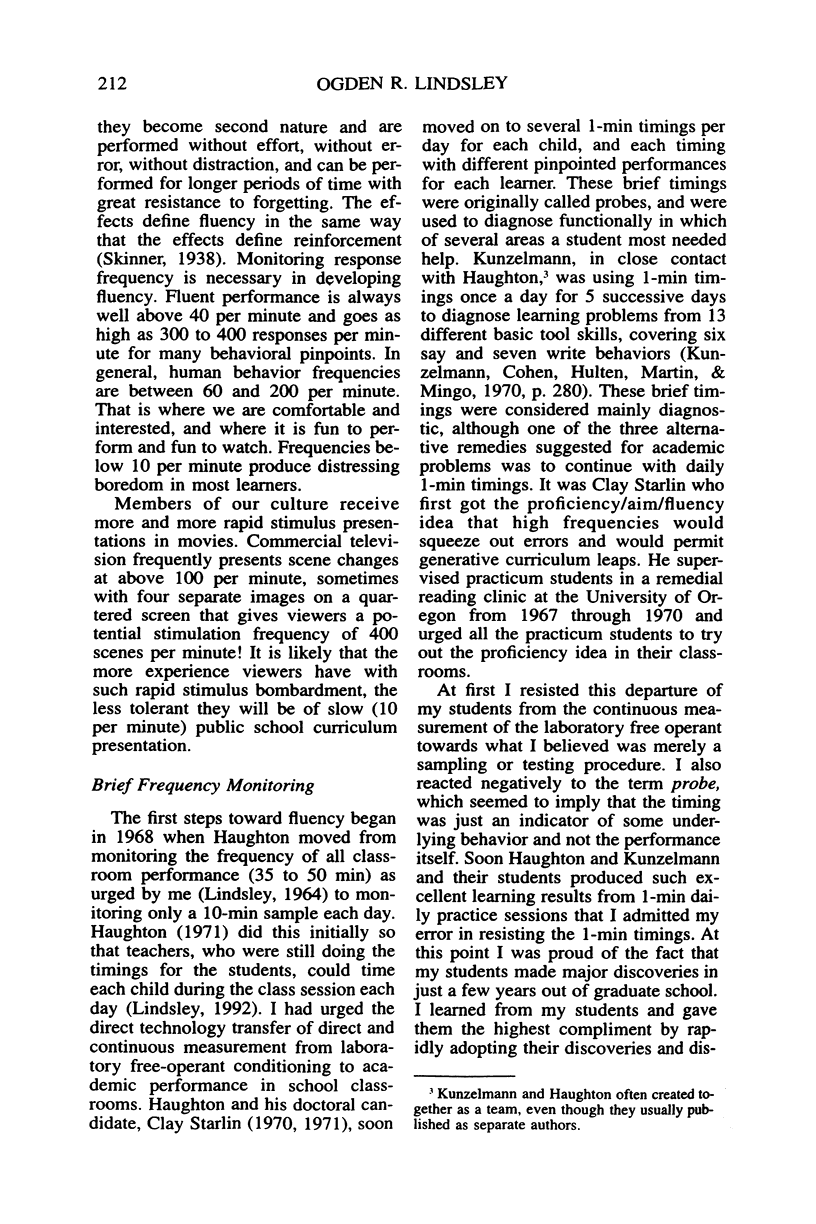
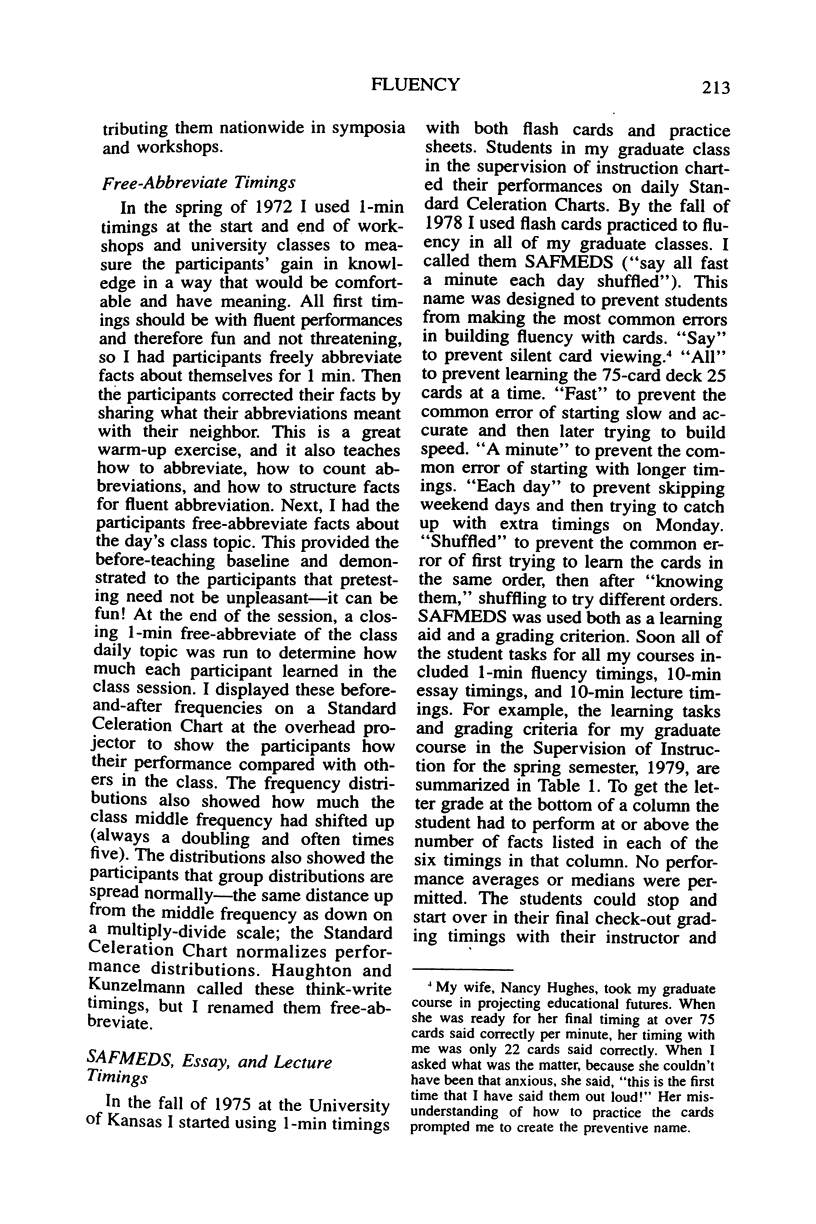
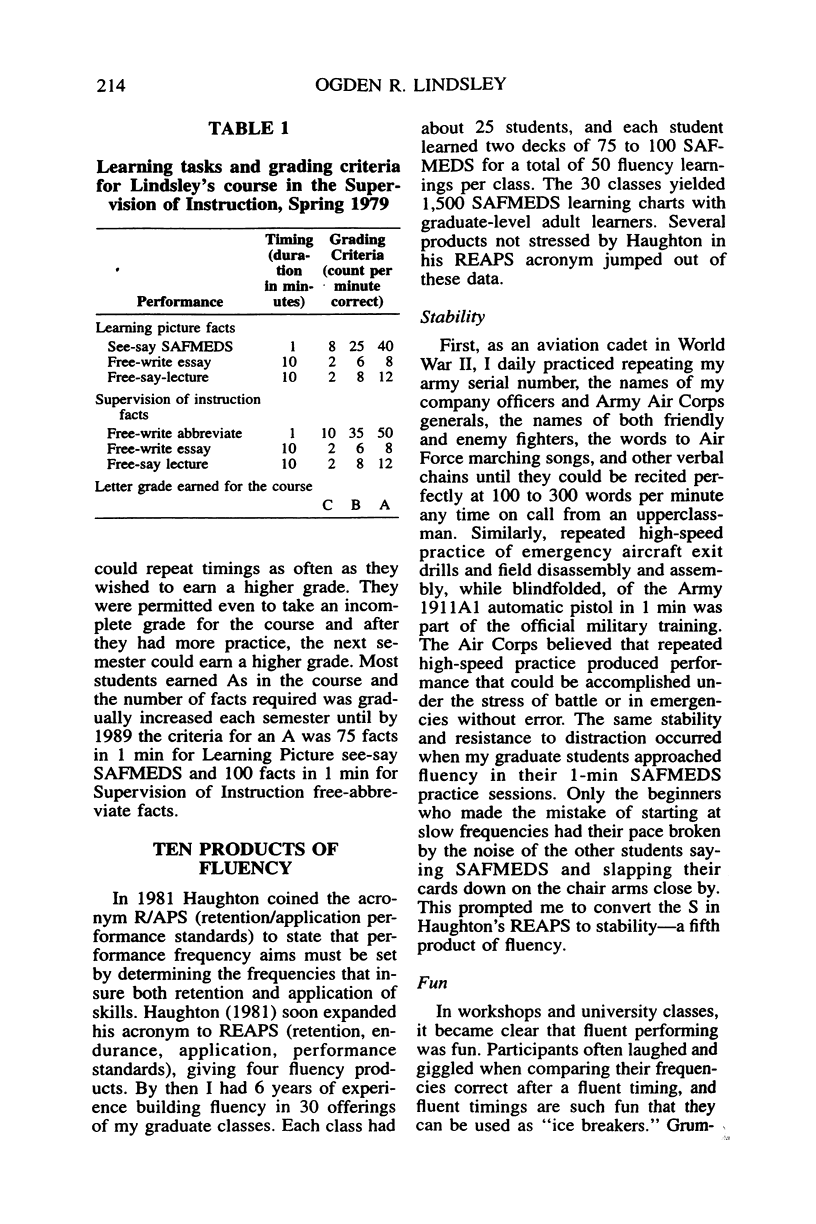
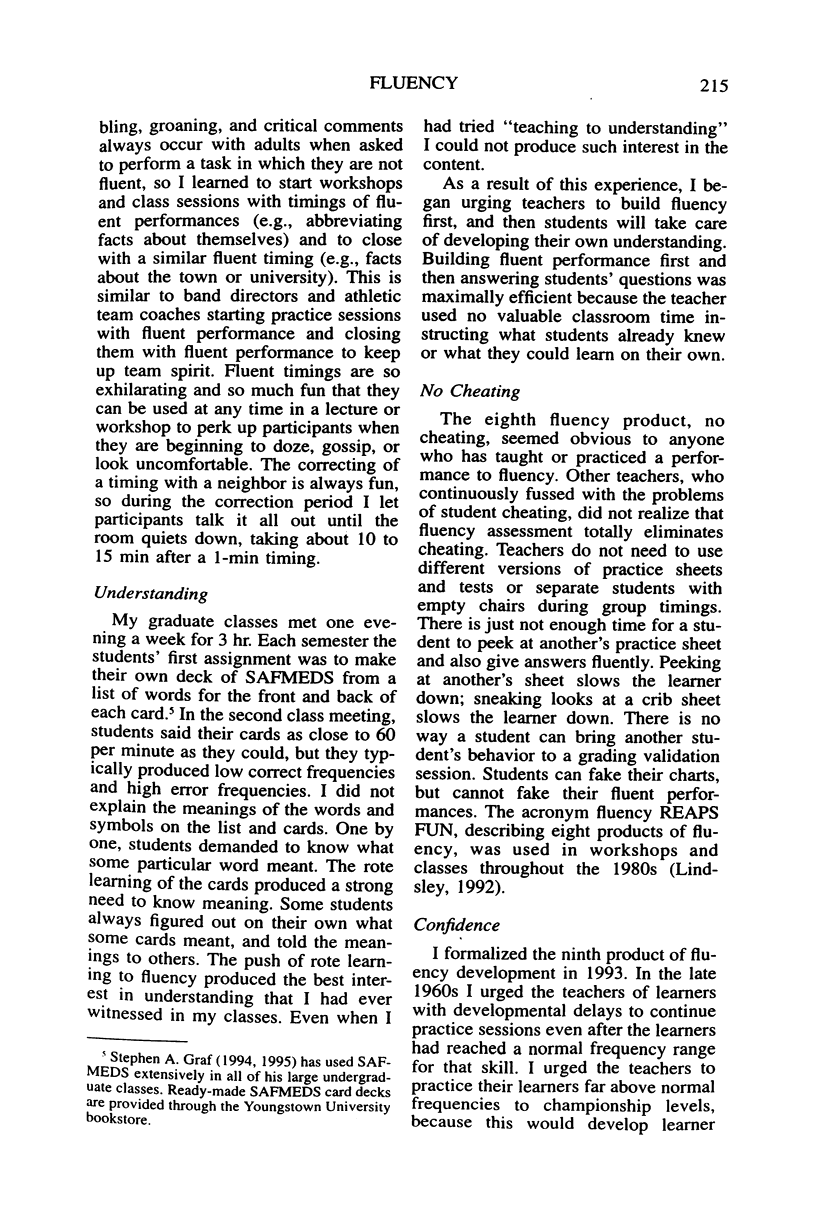

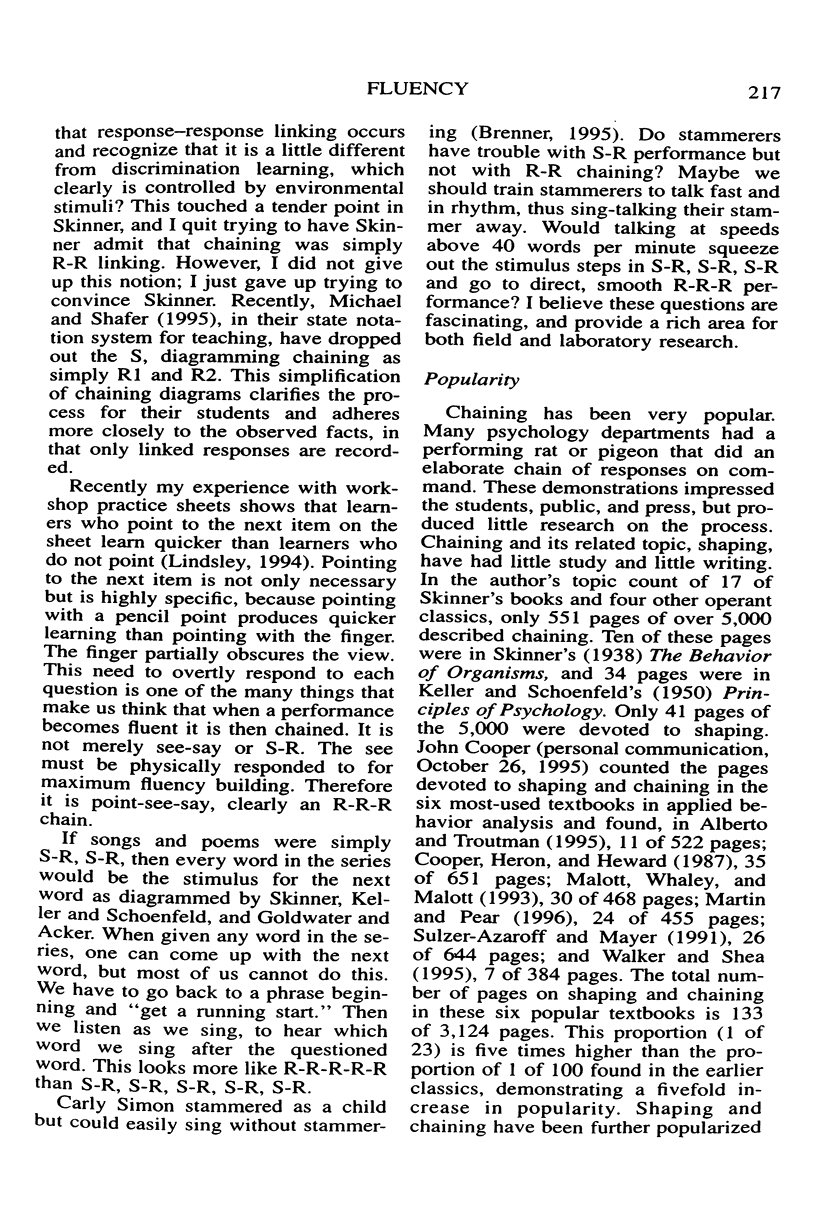
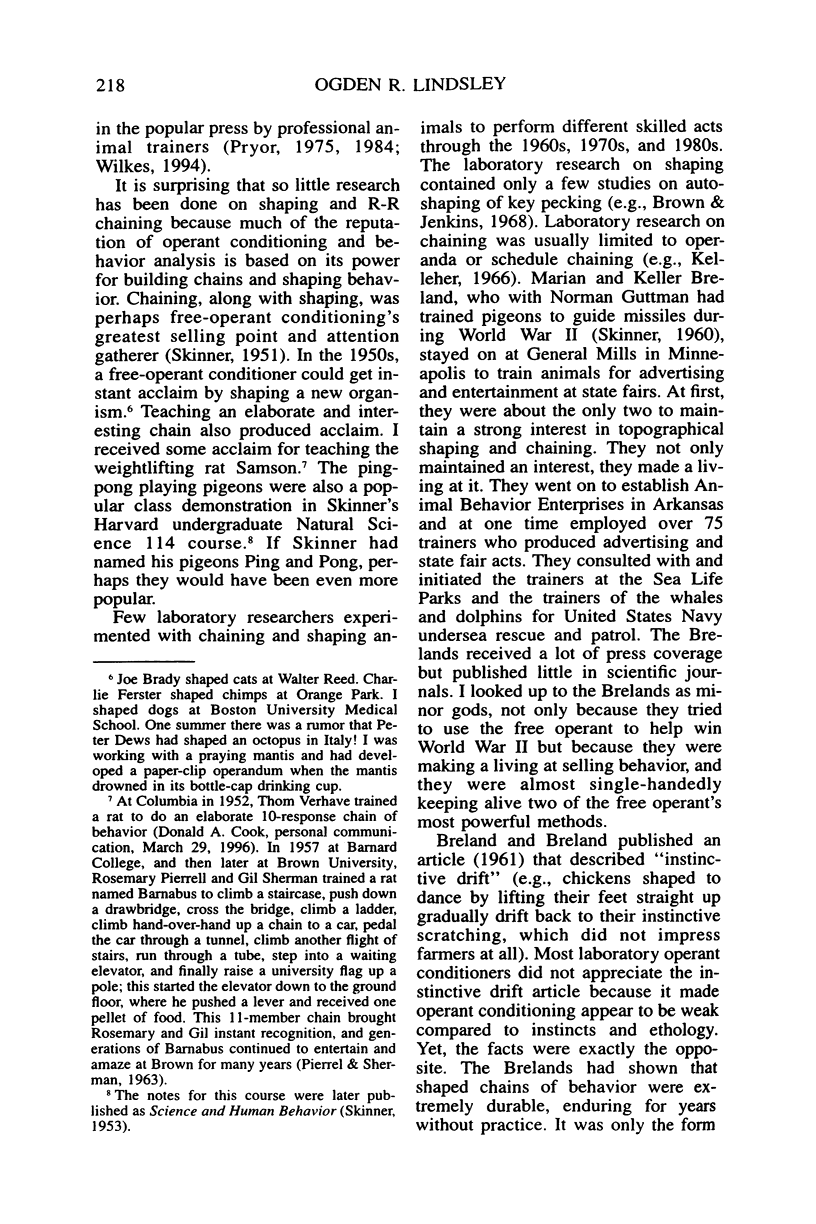
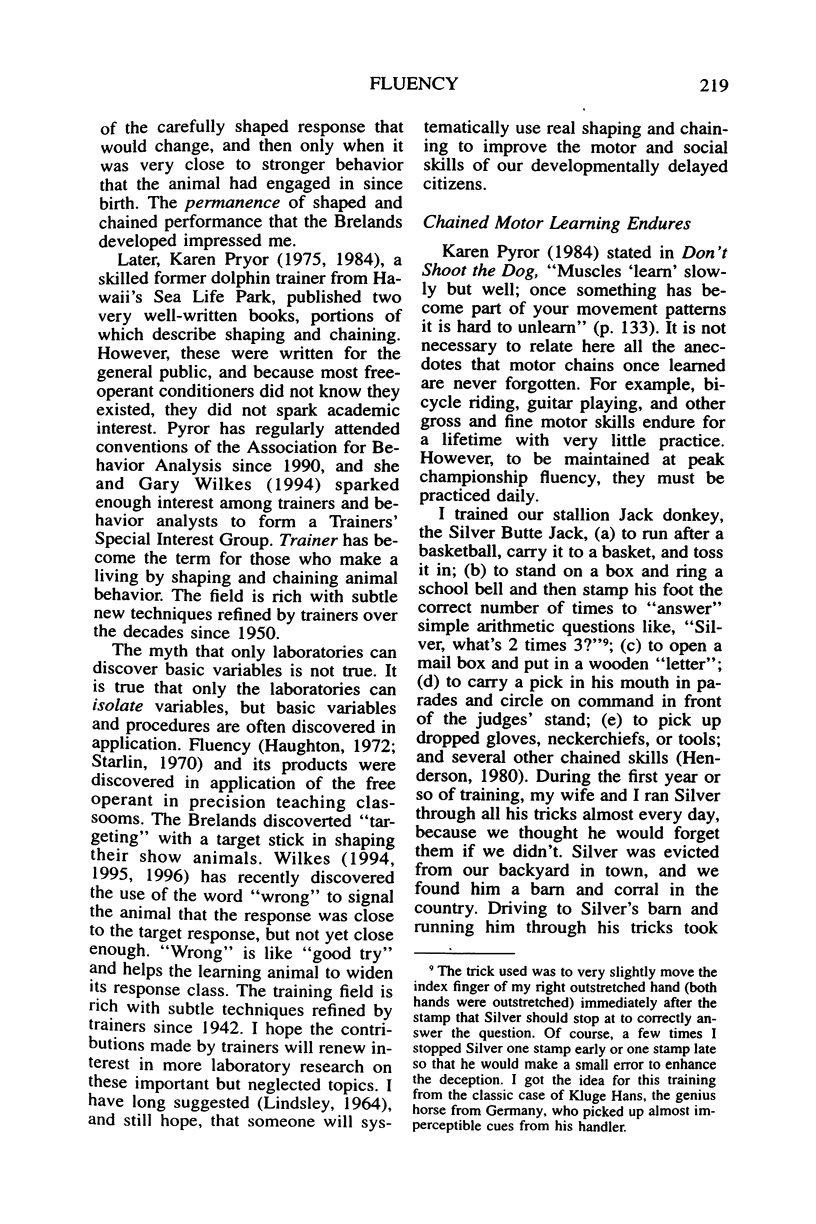
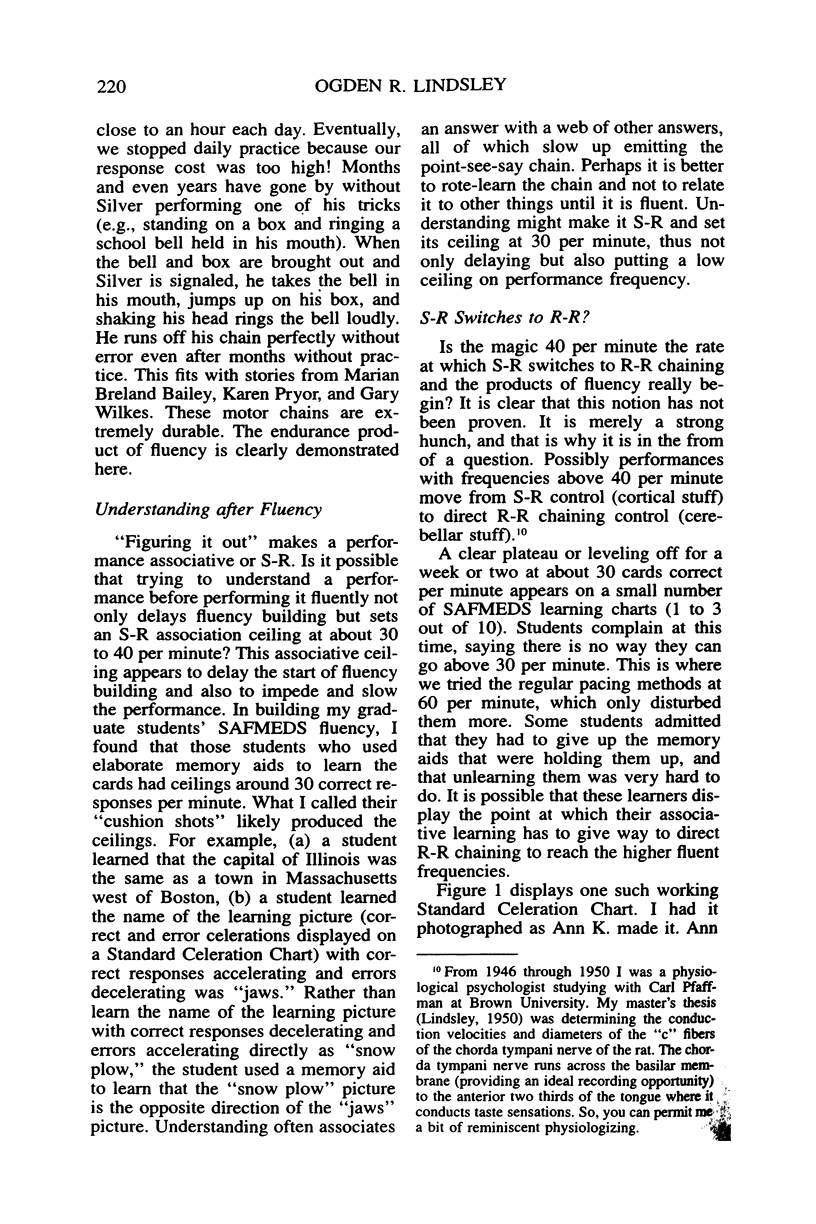
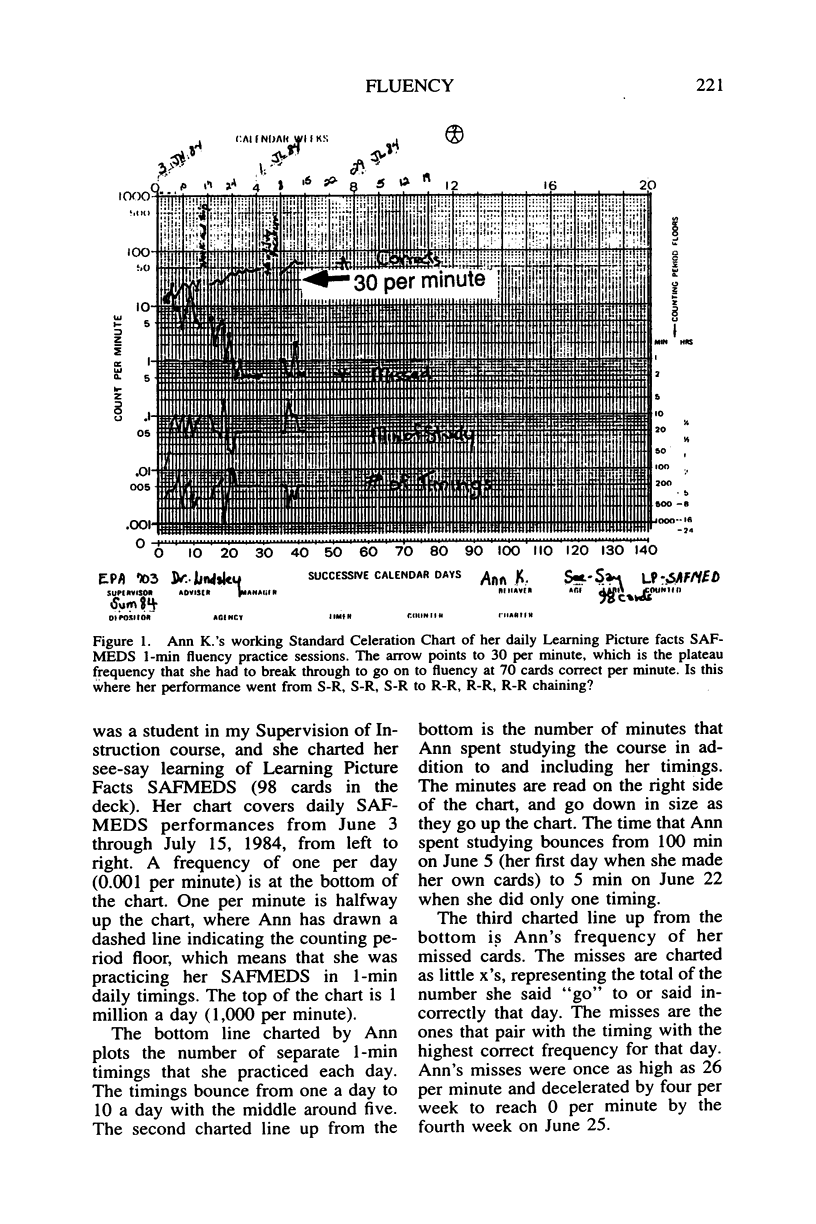
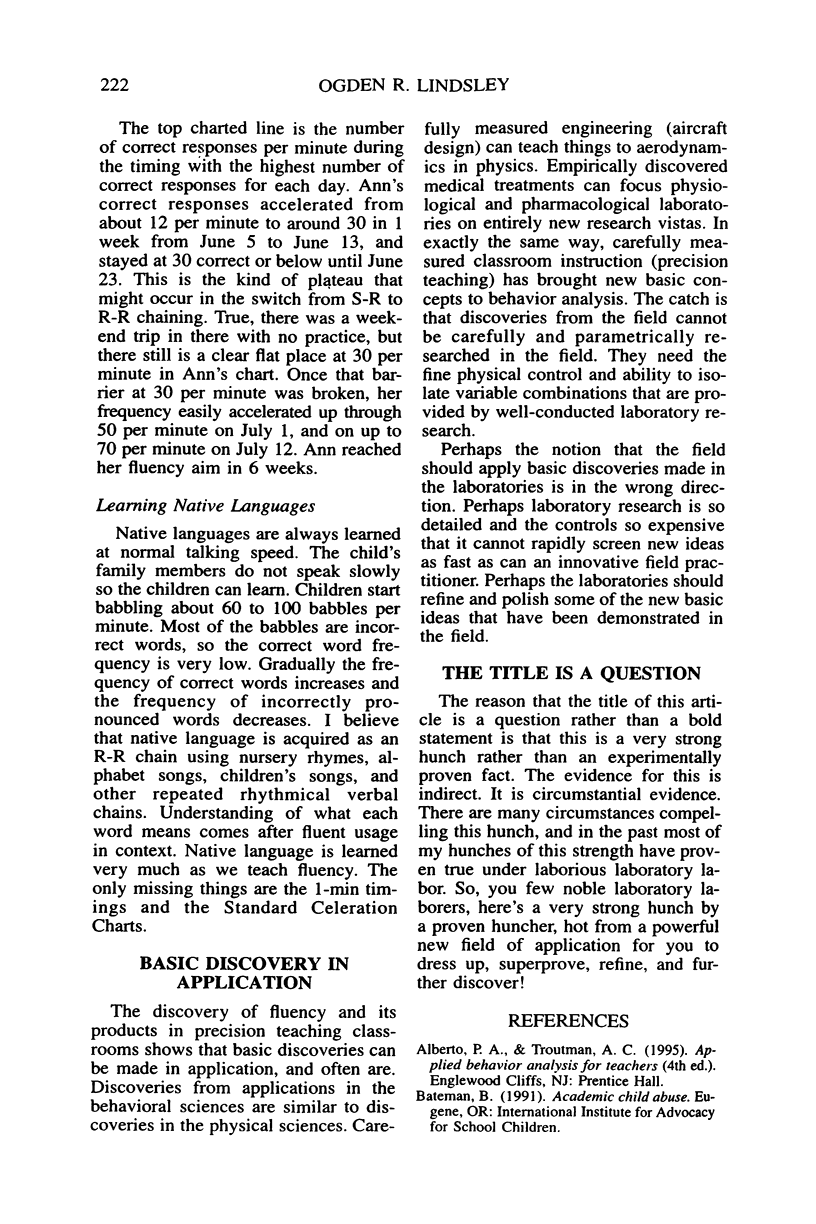
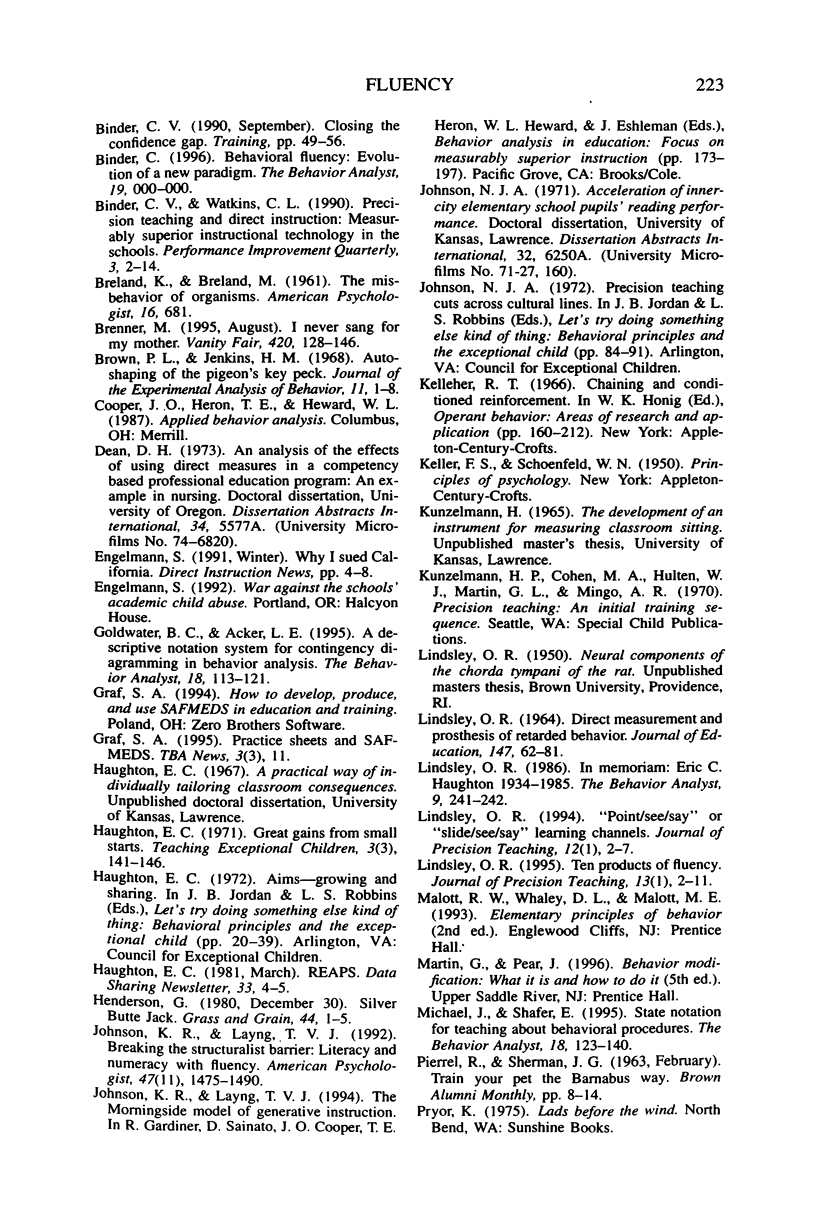
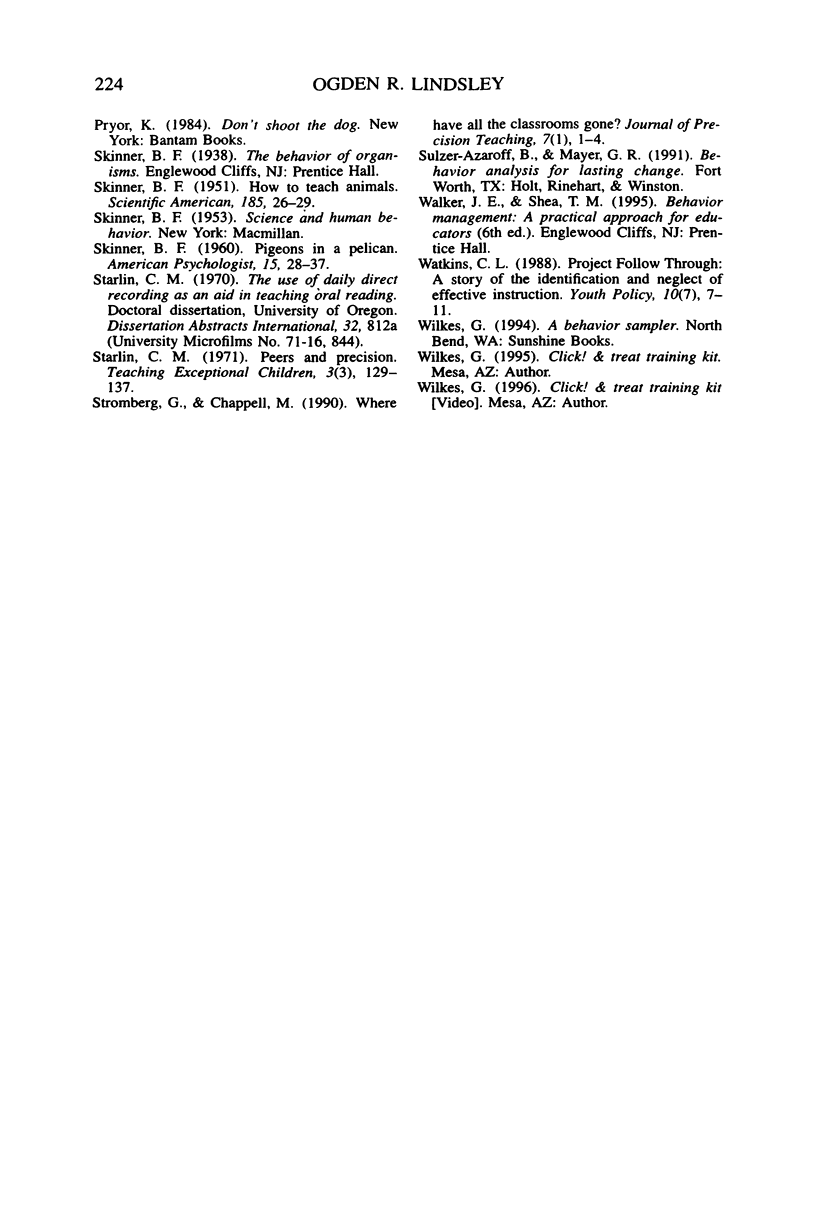
Images in this article
Selected References
These references are in PubMed. This may not be the complete list of references from this article.
- Brown P. L., Jenkins H. M. Auto-shaping of the pigeon's key-peck. J Exp Anal Behav. 1968 Jan;11(1):1–8. doi: 10.1901/jeab.1968.11-1. [DOI] [PMC free article] [PubMed] [Google Scholar]
- Goldwater B. C., Acker L. E. A descriptive notation system for contingency diagramming in behavior analysis. Behav Anal. 1995 Spring;18(1):113–121. doi: 10.1007/BF03392697. [DOI] [PMC free article] [PubMed] [Google Scholar]
- Johnson K. R., Layng T. V. Breaking the structuralist barrier. Literacy and numeracy with fluency. Am Psychol. 1992 Nov;47(11):1475–1490. doi: 10.1037//0003-066x.47.11.1475. [DOI] [PubMed] [Google Scholar]
- Michael J., Shafer E. State notation for teaching about behavioral procedures. Behav Anal. 1995 Spring;18(1):123–140. doi: 10.1007/BF03392698. [DOI] [PMC free article] [PubMed] [Google Scholar]



